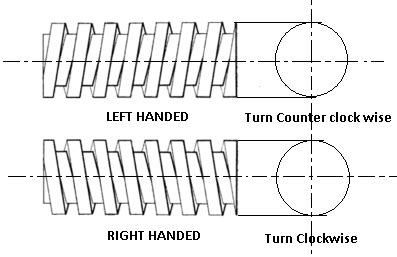Right-hand turn and Left-hand turn threading
The term "right-hand turn" in the context of something that is threaded, such as a nut, bolt, or screw, indicates that you turn it clockwise to tighten it. This is the most common threading direction, where turning the fastener to the right (clockwise) tightens it, and turning it to the left (counterclockwise) loosens it.
The term "left-hand turn" refers to something that is threaded opposite what is common. Left-hand threads are used in specific applications to prevent accidental loosening. For example, on propane systems left-hand threads are used to prevent the connection from loosening due to the direction of the pressure or rotational forces like on the shutoff valve assembly. Sometimes components may rotate or vibrate in a way that could naturally loosen a right-hand thread. Left-hand threads counteract these forces, ensuring that the connection stays tight.
Safety and compatibility considerations: Left-hand threads are often used on gas fittings, including propane tanks, to ensure that the connection cannot be confused with standard (right-hand) threaded connections used for non-hazardous materials. This reduces the risk of accidental cross-threading and incorrect connections.
Left-hand threads often have notches or markings to indicate their reverse threading, which helps with identification and prevents misuse.
